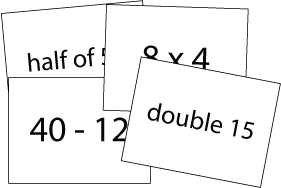Copyright © University of Cambridge. All rights reserved.
'Sort Them Out (2)' printed from https://nrich.maths.org/
Show menu
Why do this problem?
The intention of this problem is that learners will work together as a team. It should help in developing mathematical language as well as providing interesting practice in varied number work and possibly offer opportunities to share calculation strategies. It will probably not take a whole lesson to do.
Possible approach
One of these sheets needs to be printed out: the sheet of fifteen cards has easier questions than the second sheet of twenty cards. The sheets will need to be cut into separate cards. You must give out all the cards in the set you chose to do!
To begin with, give learners time to work individually on the questions on their own cards. After a suitable period of time, encourage them to ask each other about the questions and answers on other cards. At this stage, members of the group can help each other with the questions, but discourage them from simply giving someone else an answer.
A short plenary should provide an opportunity for the groups to explain the organisation they chose and for such remarks as "I knew my answer was wrong when it didn't fit in with anyone else's".
Key questions
Possible extension
Learners who find these questions easy may not have solved the problem! How can the cards be organised, arranged; or ordered? Such pupils could help other members of the team check all the answers. Some learners may want to devise their own set of cards to be used in a similar way.
Possible support
You can purposely give certain cards to certain children if you do not want to take them too far out of their comfort zone where the calculation is concerned. It may be appropriate for one group of children to work using the cards in the simpler version of the problem. The principles are exactly the same, but the calculations involve addition and subtraction up to $25$.
